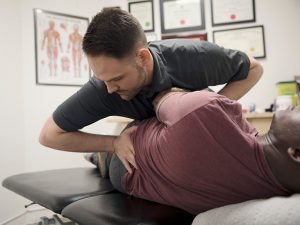Our last blog post provided an overview of the Georgia Board of Chiropractic Examiners (“3 Aspects of the Georgia Board of Chiropractic Examiners”). Now, we wish to provide an overview of the scope of practice for chiropractors in Georgia. As mentioned in the last post, the main rules covering the practice of chiropractors in Georgia are found in Title 43, Chapter 9 of the Georgia Code. To begin to understand the scope of practice of a Georgia chiropractor, there are three main code sections we look to: O.C.G.A. § 43-9-1, 43-9-12.1, and 43-9-16.
scope of practice for chiropractors in Georgia. As mentioned in the last post, the main rules covering the practice of chiropractors in Georgia are found in Title 43, Chapter 9 of the Georgia Code. To begin to understand the scope of practice of a Georgia chiropractor, there are three main code sections we look to: O.C.G.A. § 43-9-1, 43-9-12.1, and 43-9-16.
O.C.G.A. 43-9-1 defines “Chiropractic” in subsection (2) as “the adjustment of the articulations of the human body, including ilium, sacrum, and coccyx, and the use of X-ray, provided that the X-ray shall not be used for therapeutical purposes. . . .”
O.C.G.A. § 43-9-12.1 provides in part:
The doctor of chiropractic must bring to the exercise of that person’s profession a reasonable degree of care and skill, which shall include the determination of the need for chiropractic care, as defined in paragraph (2) of Code Section 43-9-1, and shall render treatment, referral to the appropriate health care provider, or both treatment and referral commensurate with that chiropractor’s findings.
Rule 100-10-.01 expands on how the Georgia Board of Chiropractic Examiners interprets section 43-9-12.1 and includes a reference to the methods taught by chiropractic schools.
O.C.G.A. § 43-9-16 outlines the scope of practice. In broad terms, chiropractors can “evaluate, diagnose, and adjust patients according to specific chiropractic methods in order to correct spinal subluxations or to adjust the articulations of the human body.” O.C.G.A. § 43-9-16(a). Subsection (b) provides:
The chiropractic adjustment of the spine or articulations of the human body may include manual adjustments and adjustments by means of electrical and mechanical devices which produce traction or vibration. Chiropractors who have complied with this chapter may also use modalities. . . . Chiropractors who have complied with this chapter may utilize and recommend therapeutic procedures effecting change through the application of clinical skills and services that attempt to improve function, including therapeutic exercise, therapeutic activities, manual therapy techniques, massage, and structural supports as they relate to the articulations of the human body; provided, however, that the same shall not be construed to allow chiropractors to treat patients outside the scope of practice of chiropractic as set forth in this chapter.
As is clear from the above rules, the scope of chiropractic practice is not overly detailed and, arguably, may not cover all the broad practices and techniques that modern chiropractors are trained to perform. There have been few changes to the chiropractic rules since their inception in 1921. For instance, it was not until 1997 that chiropractors were specifically allowed to refer patients for diagnostic treatment. See Attorney General Opinion 2006-1. In addition, the use of X-ray is allowed, but no other advanced imaging techniques are referenced even though it is common for the use of other advanced imaging techniques to be taught to chiropractic students.
For chiropractors in Georgia, it is important to be familiar with the laws and rules declaring the scope of practice. Our attorneys are experienced in advising chiropractic clients on compliance, scope of practice, and Georgia Board of Chiropractic Examiners matters. If you have questions about or would like to discuss this blog post, you may contact our healthcare and business law firm at (404) 685-1662 (Atlanta) or (706) 722-7886 (Augusta), or by email, info@hamillittle.com. You may also learn more about our law firm by visiting www.hamillittle.com.
*Disclaimer: Thoughts shared here do not constitute legal advice.
 Total Health Law Blog
Total Health Law Blog

